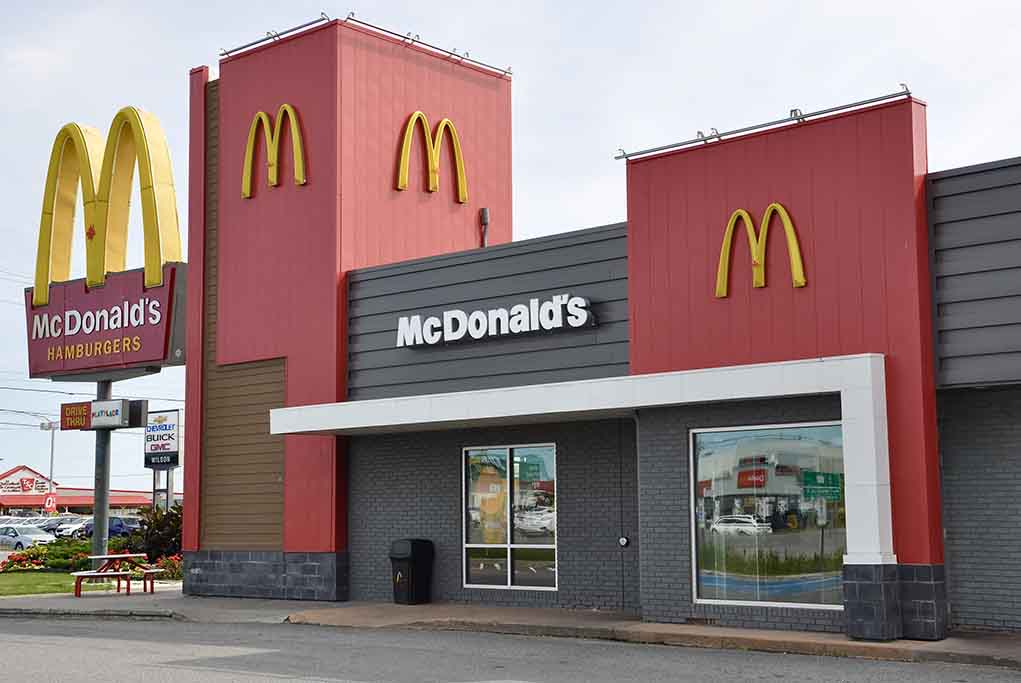
McDonald’s reports its steepest sales decline since 2020 as American consumers tighten their belts amid persistent inflation concerns and economic uncertainty.
Top Takeaways
- McDonald’s U.S. same-store sales dropped 3.6% in the first quarter of 2025, marking the largest decline since the pandemic.
- The fast-food chain is extending its $5 Meal Deal through 2025 and introducing new menu items to attract cautious consumers.
- Global sales fell 1%, with other major restaurant chains including Chipotle, Starbucks, and KFC also reporting slowdowns.
- Economic uncertainty, inflation fears, and potential tariff implications are causing consumers across income levels to reduce discretionary spending.
- Despite the sales drop, McDonald’s remains confident in its annual forecast and plans to focus on value offerings to regain market share.
Economic Pressures Drive Historic Sales Decline
McDonald’s reported a 3.6% drop in U.S. same-store sales for the quarter ending March 31, 2025, marking the most significant decline since the early pandemic period in 2020. This represents the second consecutive quarterly decline for the fast-food giant, with both revenue and same-store sales falling more than analysts had anticipated. The company’s overall revenue decreased by 3% as fewer customers visited U.S. locations, reflecting broader economic concerns affecting consumer spending patterns across the restaurant industry.
CEO Chris Kempczinski addressed the challenges directly, describing market conditions as the “toughest” and acknowledging that consumers are “weighed down by the cumulative impact of inflation and heightened anxiety.” The executive also noted the company is “grappling with uncertainty” but expressed confidence in McDonald’s ability to navigate difficult conditions and potentially gain market share from competitors during this period of economic strain.
🇺🇸 JUST IN: McDonald's reports biggest drop in US sales since mid-2020#McDonalds #Sales #US #Growth pic.twitter.com/n1bQEbbuQm
— The Market Journal (@MarketJournalX) May 1, 2025
Industry-Wide Slowdown Affecting Major Chains
McDonald’s is not alone in facing headwinds. Several other prominent restaurant chains including Chipotle, Domino’s, Starbucks, Pizza Hut, and KFC have reported similar slowdowns in their U.S. operations. The restaurant industry as a whole has observed declining sales as financial concerns prompt consumers to reduce spending on dining out. Some brands have specifically noted reduced spending among lower-income and Hispanic shoppers, indicating the economic pressure is affecting various demographic groups.
“This is actually a 2025 thing. Until people are more confident that they know what’s going on, they aren’t going to be reaching into their savings,” said Domino’s CEO Russell Weiner.
Against this challenging backdrop, some restaurants have found success through promotional strategies. Taco Bell and Chili’s have reportedly experienced increased guest traffic by offering promotional deals that appeal to value-conscious consumers. This suggests that price-focused marketing may be a crucial factor in maintaining market share during periods of economic uncertainty.
McDonald’s Strategic Response to Sales Decline
In response to the sales slump, McDonald’s is doubling down on value offerings to entice cautious consumers. The company plans to extend its popular $5 Meal Deal through at least 2025 and is focusing on strengthening its McValue menu. Additionally, McDonald’s is introducing new menu items, including Chicken Strips and a limited-edition meal tied to “A Minecraft Movie,” aimed at increasing customer traffic and spending.
“We remain cautious about the overall health of the consumer,” said Kempczinski, while discussing the company’s strategic plans.
The company is also aiming to boost profitability with new beverages inspired by its CosMc’s spin-off restaurants. Despite the mixed quarterly results, McDonald’s has reaffirmed its full-year forecast, signaling confidence in its ability to recover from the current downturn. The company’s shares have shown resilience, up 10% this year and outperforming an S&P subindex of restaurants, suggesting investor confidence in McDonald’s long-term prospects despite short-term challenges.
Global Performance and External Factors
Beyond the United States, McDonald’s global same-store sales declined by 1%, contrary to analysts’ expectations of a 0.95% rise. The performance varied by region, with improvements in the Middle East and Japan helping to offset declines in the United Kingdom and other markets. The Middle East, in particular, is showing signs of recovery following informal boycotts of western fast-food chains related to perceived positions on the Gaza conflict.
The U.S. economy contracted for the first time in three years during the first quarter of 2025, raising concerns about a possible recession. Policy inconsistencies and tariff implications are creating additional uncertainty for businesses, potentially increasing costs and disrupting supply chains. These factors are likely to continue influencing consumer behavior and business operations in the near term.

















